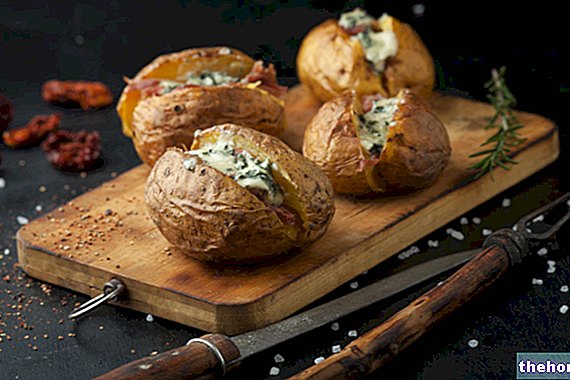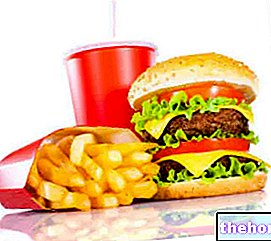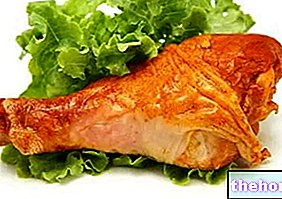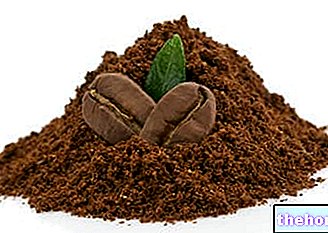Glucosinolates - also known as sulfurized glucosides or thioglucosides - are a group of glucosides composed of a sugar part linked, via a sulfur atom, to the aglyconic part, derived from amino acids such as methionine, phenylalanine, tyrosine and tryptophan.
As long as they remain sequestered in the sub-cellular compartments of plant tissues, glucosinolates are chemically stable and biologically inactive. Conversely, tissue damage caused by parasites or any other factor that leads to tissue tearing causes the glucosides to come into contact with endogenous enzymes called myrosinases. Thus a process of enzymatic hydrolysis (mediated by myrosinases) of the glucosinolates is activated, with the breaking of the β-thioglucoside bond and the formation of unstable intermediaries which spontaneously rearrange themselves into isothiocyanates, thiocyanates or nitriles.

Isothiocyanates are particularly well-known in the phytotherapeutic field for their lacrimatory, revulsive, rubefacient and vesicant action; for this reason, some drugs particularly rich in glucosinolates, such as mustard, are traditionally used in the form of poultices and ointments against catarrhal affections, neuralgia and myalgia.
Isothiocyanates are also responsible for the pungent odor and spicy taste of the drugs that contain them, especially creuciferae or brassicaceae (turnip, cabbage, cabbage, horseradish, horseradish, Brussels sprouts, mustard, mustard). glucosinolates discourage the aggression of the plant by insects and herbivores, in man they seem to carry out the same activity against tumor cells, as they inhibit some phases of carcinogenesis and induce the apopotosis of numerous cell lines.
To date, more than 130 glucosinolates are known, the concentration of which varies in the various vegetables and in the same vegetable in relation to the age of the plant, the fertility of the soil, any diseases and the use of growth regulators.
Preserve the anticancer properties of foods rich in isothiocyanates
Among the isothiocyanates most studied for its anticancer properties we mention sulforaphane, which - concentrated above all in broccoli sprouts - has been shown to be active against neuroblastoma (a malignant embryonic tumor characteristic of the child) and carcinomas of the breast, colon and prostate. Phenylisothiocyanate, originating from gluconasturzine, an aromatic glucosinolate, has shown similar properties, especially in the prevention of lung cancer in smokers.
From the indole glucosinolates, such as those contained in mustard, unstable isothiocyanates are released which are rapidly deposited giving origin, among other things, to indole-3-carbinol, which according to various studies seems to possess marked anticancer properties.
Glucosinolates, their hydrolysis products and myrosinases are easily inactivated by heat (it is no coincidence that the smell of cabbages becomes more intense the longer the cooking, indicating the release of sulfur), which justifies the use of fresh or lightly steamed food. As anticipated, the enzyme myrosinase is released from cell vacuoles following wounds or grinding of the various parts of the plant (importance of correct chewing and avoiding excessive mincing of vegetables). We also recall the presence of myrosinase in the intestinal microflora, which contributes to making food-based isothiocyanates further available.
Isothiocyanates and thyroid
The high concentration of isothiocyanates in some vegetables has earned them the qualification of "goitrogenic" foods; in fact, these substances inhibit the incorporation of iodine and the formation of thyroxine, slowing down the thyroid function. In any case, if the dietary intake of iodine is sufficient, there is no reason to exclude these foods from the diet, the consumption of which should be encouraged. In fact, due to the presence of certain glucosinolates, broccoli and cabbage are fully included among functional foods, considered useful in the prevention of some forms of cancer, such as that of the bladder or breast, on the basis of the correlation found in recent studies between consumption of Brassicacae and reduced risk of cancer.
Spicy pasta rings with clams and Roman cabbage - Alice's Recipes
If it is true that "cancer hates cabbage", even for many people the relationship with this vegetable is not exactly idyllic. To make you appreciate this precious food it is important to find the right recipe. Alice, the official personalcooker of MypersonaltrainerTv, guides you step by step in the preparation of a tasty first course rich in antioxidants and omega-3 fats.
Spicy pasta rings with clams and Romanesco cabbage
Problems with playing the video? Reload the video from youtube.
- Go to the Video Page
- Go to the Video Recipes Section
- Watch the video on youtube
Select plant Fir Acacia Acerola Sorrel Yarrow Yarrow Yarrow Aconito Adatoda Garlic Agnocasto Agrimonia Alchemilla Alkekengi Aloe Altea Witch Hazel Ammi or Visnaga Pineapple Andrographis Anemone Pulsatilla Angelica Anise Star Anise Japanese Star Anise Bitter Orange Bitter Areca Arnica Harpagophytum Arpagophyte Artemisia Asteragus Basil Asparagus Asparagus Peruvian Asparagus Asparagus Asparagus Hawthorn Boldo Borage Shepherd's Purse Boswellia Bucco Butea superba Cocoa Coffee Cajeput Calamus Calamus Marigold Camedrio Chamomile Roman Chamomile Camphor Cinnamon Ceylon Maidenhair Capuchin Artichoke Cardamom Cardiac Thistle Asian Thistle Carvi Cascara Cassia Catecu Catha Cabbage Celandine Chicory Centaurea Cinnamon Cypress Celandine Chives Cypress Coca Cola Colchico Combreto Condurango Comfrey Coriander Cranberry Barberry American Chrysanthemum Cumin Turmeric Damiana Digital Dioscorea Drosera Dulcamara Dunalilella Echinacea Eder a Ephedra Elenio Eleutherococcus Helichrysum Evening primrose Horsetail Alfalfa Erica Euphrasia Erisimo Escolzia Eucalyptus Farfara Farfaraccio Calabar bean Fenugreek Fennel Phytolacca Frangola Ash Fumaria Japanese Mushrooms Galega Ganoderma lucidum Garcinia Cambogia Mulberry Gentian Broom Ginkgo Ginkgo Guipana Guipana Gynestra Ginkgo Hibelia Gymnasium Hibiscus Guarulp St. John's Wort Horse Chestnut Ispaghul Hyssop Jaborandi Kava kava Konjac Laminaria Cherry Laurel Lavender Lemongrass Lespedeza Lovage Icelandic Lichen Lemon Flax Lippia Licorice Lobelia Hops Maca Marjoram Maize Mallow Manna Marrubio Marrubio d "water Matè Melaleuca Meliloto American Lemon balm Myrtle Myrama Walnut Nutmeg Walnut vomica Olive tree Meadowsweet Ononide Opuntia Oregano Orthosiphon Nettle Poppy Papaya Parietaria Feverfew Passiflora Chilli Perilla Periwinkle Phyllanthus Plantain Picrorhiza Pilosella Pino Pisci dia Podofillo Polygala Grapefruit Parsley Psyllium Pueraria mirifica Butcher's broom Pygeum Quassia Oak Rhubarb Ratania Rauwolfia currant Castor bean Rhodiola Rosehip Rosemary Rue Willow Sarsaparilla Sage Elderberry Sassafras Sedum Ergot Senna Serenoa Repens Soybean Solidago Tansy Taraxus Tamarind Tamarind Tamarind Tamarind Tamarindo Ursina Valerian Vanilla Mullein Verbena Veronica Viburnum Vinca Pansy Mistletoe Vine Withania Yohimbe Saffron Ginger Pumpkin Select disease Juvenile Acne Rosacea Tinnitus Tinnitus Aerophagia Tendon Affections Afonia Aphthae Algias Functional Halitosis Breastfeeding Allergy Anemia Anguish Anxiety Arteriosclerosis Asthrosis Asthrosis Arthritis Arthritis Men Sex Woman Blepharitis and Conjunctivitis Eye bags Bronchitis Gallstones Kidney stones Salivary stones Baldness Androgenetic Candida Fragile hair Caries Headache Cellulitis Motion sickness Cystitis C limaterio Cholecystopathy High cholesterol Ulcerative colitis Colonoscopy Contusions Hematoma Convalescence Couperose Depression Dermatitis Diaper dermatitis Diabetes Diarrhea Erectile dysfunction Dyslipidemia Dysmenorrhea Dyspepsia Disturbances of vision Hemorrhoids Epistaxis Herethism Heart disease Fever Fibromyalgia Gastro-intestinal disease Flatulence Hypertension Fibromyalgia Gastrointomnia Jaundice Laryngitis Renal lithiasis Toothache Sore throat Thinness Menopause Meteorism Mononucleosis Alzheimer's disease Crohn's disease Nausea Vomiting Obesity Dark circles Onychomycosis Osteoporosis Dry skin Periarthritis Piorea Low pressure Prostatitis Psoriasis Colds Breast fissures Anal fissures Gastro-nasal rhinitis Senescence Premenstrual Syndrome Sinusitis Quit smoking Overweight Fatty liver Constipation Stomatitis Stress Cough Triglycerides high Ulcer Burns Nails Brittle flashes Heat Warts Dizziness Properties herbal Tanning Abortive adaptogenic Aphrodisiac bittering analgesic anesthetic anorectics analgesic antacid anti-allergic anti-asthmatic Antibiotic catarrh Anticellulitiche anticonvulsant Antidiaforetiche antidiarrheal edematous anthelmintic antiemetic Antiemorroidarie antiphlogistic Antiidrotiche Antinevrotiche Antioxidants antipyretic antirheumatic antiscorbutic Antiseptic antispasmodic anti-uric Aperitive Flavoring Astringent Balsamic Bechiche Capillarotrope Cardiotonic Carminative Cathartic Caustics Healing Cholagogues Choleretic Dyes Decongestants Deodorants Purifying Diaphoretic Cleansers Disinfectants Detoxifiers Thirst quenching Diuretics Exciting Emetics Emmenagogues Emollients Hemostatic Energies Hepatoprotectors Expectorants Eupepticus Moisturisers Galactosensitizers lanti Hypertensive Hypnotic Hypoglycemic Hypotensive Irritants Laxatives Soothing Narcotic Nerves Nutrients Odontalgic Pectoral Purgative Revulsive Remineralizing Refreshing Rubefacient Scialagoghe Sedative Soporifugas Sneezing Stomachic Stomatics Narcotic Vascular Tightenitis




























